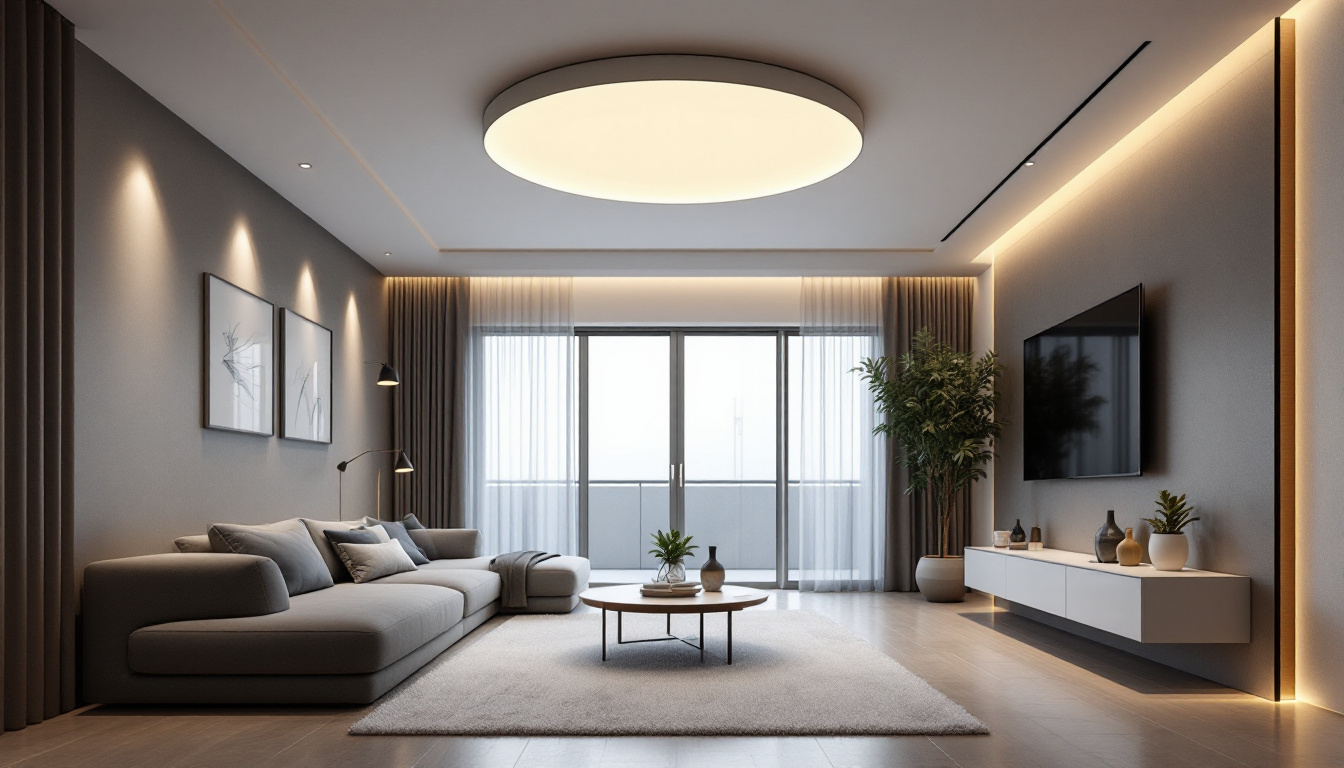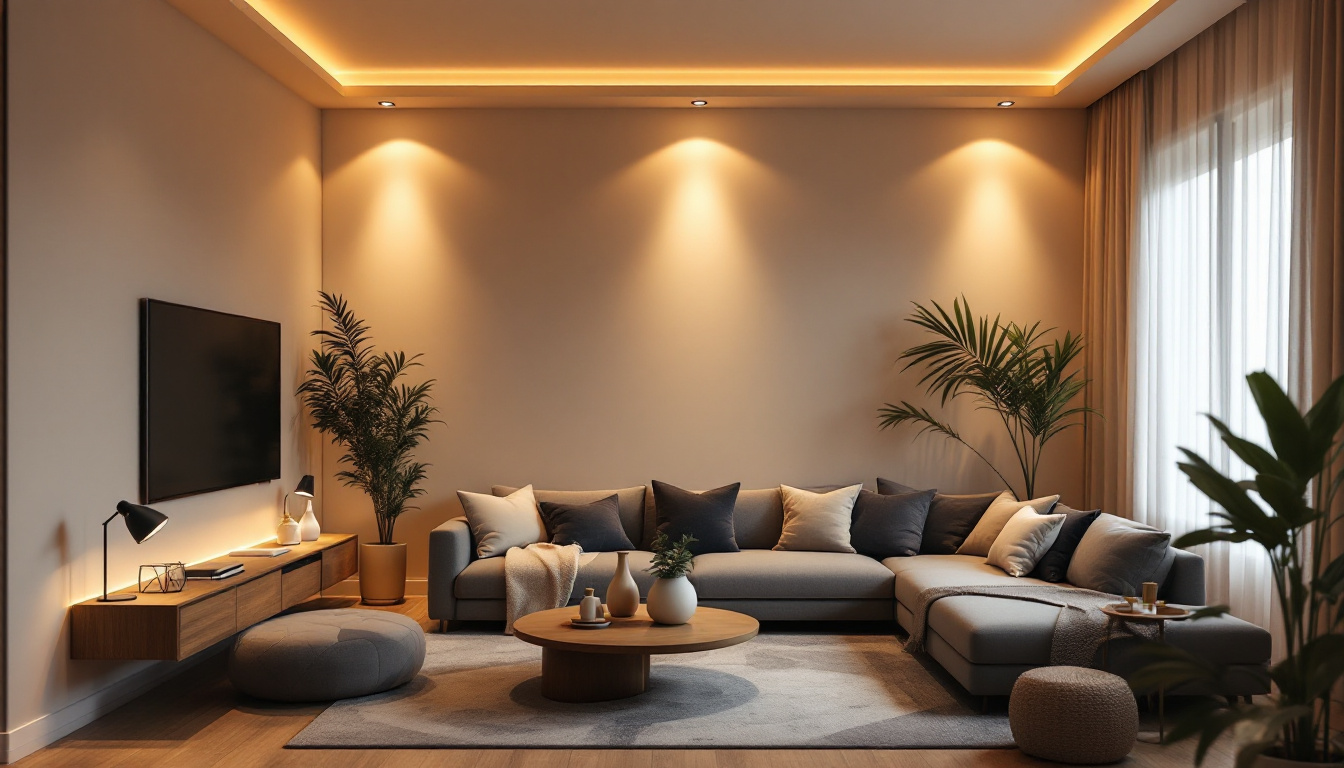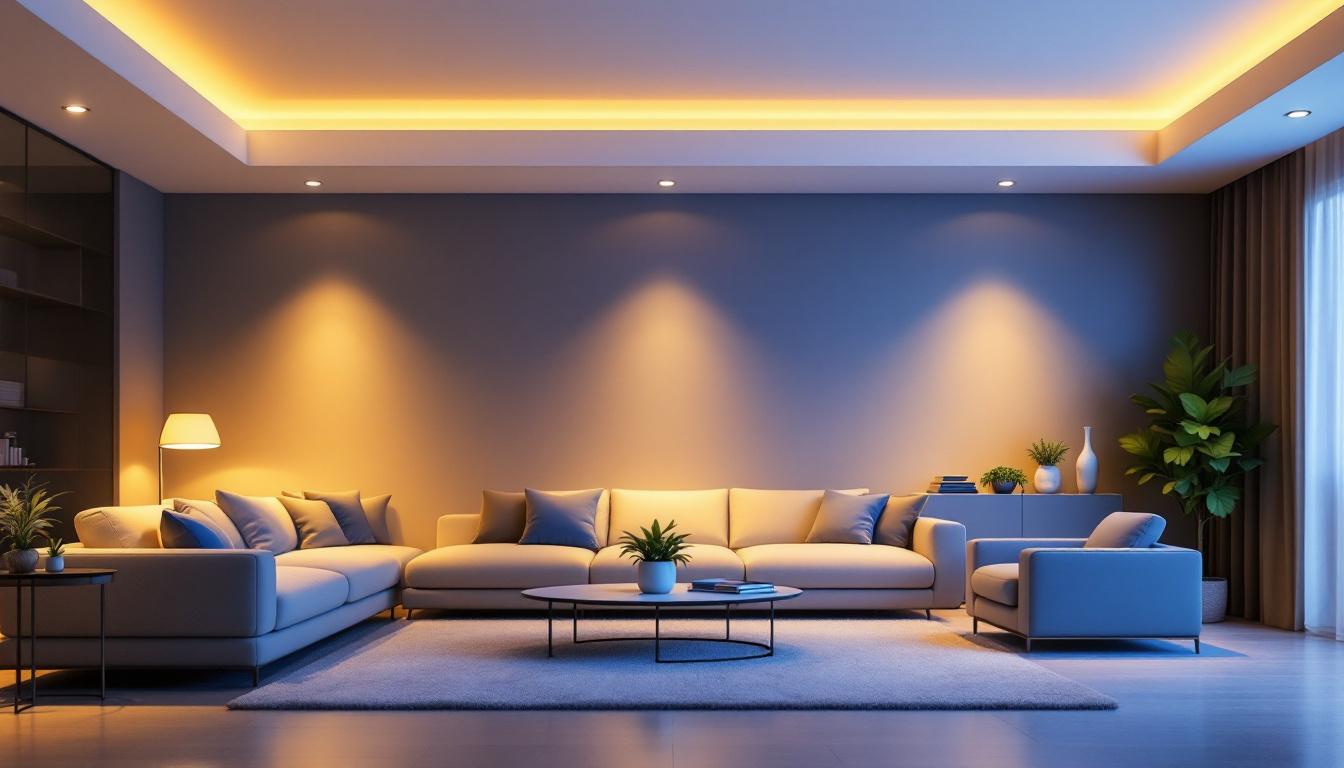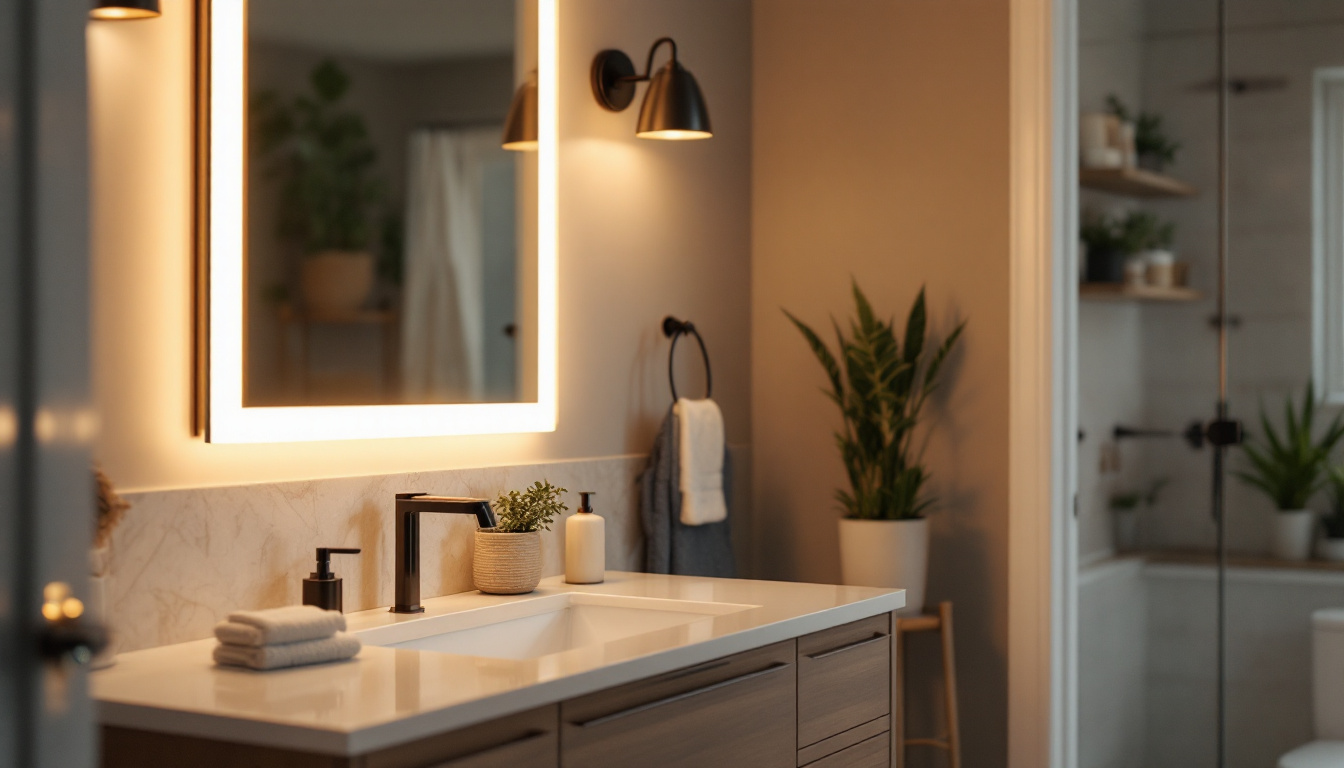
Recessed lighting has become a staple in modern interior design, offering a sleek and unobtrusive way to illuminate spaces. As lighting contractors, understanding the costs associated with recessed lighting and its role in contemporary lighting solutions is essential for providing clients with informed options. This article delves into the various aspects of recessed lighting, including its benefits, installation costs, and the factors influencing pricing.
Recessed lighting, often referred to as can lighting or downlights, is installed into the ceiling, creating a clean and minimalist aesthetic. This type of lighting is not only functional but also versatile, making it suitable for various applications, from residential homes to commercial spaces. The seamless integration of recessed lights into the ceiling design allows homeowners and designers to achieve a modern look while ensuring that the illumination is both effective and unobtrusive.
One of the primary advantages of recessed lighting is its ability to provide ambient, task, or accent lighting without taking up physical space. By being embedded in the ceiling, it allows for a more open and airy feel in a room, which is particularly beneficial in smaller areas. Additionally, recessed lighting can be used in conjunction with other lighting sources to create layered lighting effects, enhancing the overall atmosphere of a space. For instance, combining recessed lights with pendant fixtures or wall sconces can add depth and dimension to a room, making it feel more inviting and well-designed.
There are several types of recessed lighting fixtures available, each designed for specific purposes. The most common types include:
In addition to these types, recessed lighting can also vary in terms of trim styles and finishes, which can further enhance the design aesthetic of a room. For instance, baffle trims can help reduce glare, while reflector trims can increase light output, making them ideal for spaces that require brighter illumination. Moreover, choosing the right bulb type, such as LED or incandescent, can significantly impact energy efficiency and the quality of light produced. LED options, in particular, have gained popularity due to their longevity and lower energy consumption, making them an environmentally friendly choice.
The cost of recessed lighting can vary significantly based on several factors. Understanding these elements is crucial for contractors when estimating project budgets and providing accurate quotes to clients.
The price of recessed lighting fixtures can range from budget-friendly options to high-end models. Basic fixtures typically start at a lower price point, while designer fixtures with advanced features, such as smart technology or enhanced energy efficiency, can be considerably more expensive. Contractors should consider the client’s budget and preferences when recommending specific fixtures.
Installation costs can also vary based on the complexity of the project. Simple installations in new construction may require less labor compared to retrofitting fixtures into existing ceilings. Factors such as ceiling height, the number of fixtures, and the need for additional electrical work can all impact labor costs. It’s essential to provide clients with a detailed breakdown of installation expenses to ensure transparency.
In addition to the fixtures and installation, other components can contribute to the overall cost. This includes dimmer switches, wiring, and insulation materials. For instance, using energy-efficient LED bulbs may have a higher upfront cost but can lead to long-term savings on energy bills, making them an attractive option for many clients.
Recessed lighting offers numerous benefits that make it an appealing choice for both contractors and clients. Understanding these advantages can help in promoting this lighting solution effectively.
One of the most significant benefits of recessed lighting is its ability to enhance the aesthetic appeal of a space. By providing a clean and modern look, recessed lights can complement various design styles, from contemporary to traditional. They can be strategically placed to highlight architectural features, artwork, or specific areas within a room, creating a visually pleasing environment.
Recessed lighting, particularly when equipped with LED bulbs, can be highly energy-efficient. LEDs consume significantly less energy than traditional incandescent bulbs, resulting in lower electricity bills and a reduced carbon footprint. This aspect is particularly appealing to environmentally conscious clients looking to make sustainable choices in their homes or businesses.
Recessed lighting can be used in various settings and applications, making it a versatile choice for contractors. Whether it’s for general lighting in a living room, task lighting in a kitchen, or accent lighting in a gallery, recessed fixtures can adapt to meet the specific needs of each space. This flexibility allows contractors to create customized lighting solutions tailored to the client’s preferences.
Understanding the installation process of recessed lighting is crucial for contractors to ensure a smooth and efficient project. The installation involves several key steps, each requiring careful attention to detail.
The first step in the installation process is planning the layout of the recessed lights. This involves determining the optimal placement to achieve the desired lighting effect while considering factors such as ceiling height and room dimensions. Proper spacing is essential to avoid dark spots and ensure even illumination throughout the space.
Before installation, it’s vital to assess the existing electrical system and determine if any upgrades are necessary. This may involve installing new wiring or circuit breakers to accommodate the additional load from the recessed lights. Ensuring compliance with local electrical codes is essential for safety and functionality.
Once the planning and electrical considerations are complete, the installation can begin. The process typically involves the following steps:
While recessed lighting offers many benefits, there are also challenges and considerations that contractors should be aware of when working with this lighting solution.
One of the primary challenges with recessed lighting is the need for adequate ceiling space. In homes with low ceilings, the installation of recessed fixtures may not be feasible, as they can create a cramped feeling. Contractors must assess the ceiling height and consider alternative lighting solutions if necessary.
Recessed lights can generate heat, especially when using incandescent bulbs. Proper insulation and ventilation are crucial to prevent overheating and potential fire hazards. Contractors should ensure that the fixtures are rated for the insulation type used and that there is adequate airflow around the lights.
Managing costs is an ongoing challenge for contractors, particularly when dealing with recessed lighting. It’s essential to provide clients with a clear understanding of the costs involved, including fixtures, installation, and any additional components. Offering budget-friendly alternatives without compromising quality can help maintain client satisfaction.
The lighting industry is constantly evolving, and recessed lighting is no exception. Staying informed about future trends can help contractors remain competitive and offer clients the latest innovations.
Smart home technology is becoming increasingly popular, and recessed lighting is adapting to this trend. Many modern recessed fixtures now come equipped with smart capabilities, allowing users to control lighting through mobile apps or voice commands. This integration not only enhances convenience but also allows for customizable lighting scenarios tailored to individual preferences.
As energy efficiency continues to be a priority, advancements in LED technology are making recessed lighting even more sustainable. Newer LED options are designed to provide higher lumens per watt, resulting in brighter lighting with lower energy consumption. Contractors should stay updated on these developments to offer clients the most efficient solutions available.
Design trends are also influencing the evolution of recessed lighting. Sleeker, more minimalist designs are emerging, allowing fixtures to blend seamlessly into ceilings. Additionally, customizable trim options are becoming more prevalent, enabling clients to choose finishes that complement their interior decor. Keeping an eye on these design innovations can help contractors provide cutting-edge solutions to their clients.
Recessed lighting plays a significant role in modern lighting solutions, offering a blend of aesthetics, functionality, and energy efficiency. For lighting contractors, understanding the costs, benefits, and installation processes associated with recessed lighting is essential for delivering exceptional service to clients.
As the industry continues to evolve, staying informed about trends and innovations will enable contractors to remain competitive and provide clients with the best possible lighting solutions. By embracing the versatility and advantages of recessed lighting, contractors can help create beautifully illuminated spaces that meet the diverse needs of their clients.
Ready to elevate your lighting projects with the sleek appeal of recessed lighting? At LumenWholesale, we offer an extensive selection of spec-grade lighting products that blend quality with unbeatable wholesale value. Say goodbye to local distributor markups and hello to superior lighting solutions that fit your budget. With free shipping on bulk orders, you can stock up on high-performance lighting without any hidden fees. Make your next project shine by choosing LumenWholesale for Wholesale Lighting at the Best Value.

Discover the top strategies lighting contractors use to maximize the impact of recessed pot lights in any space.

Discover the impact of low profile pot lights on modern lighting projects.

Discover the transformative impact of LED vanity lights through real-world success stories from lighting contractors.

Discover the essential insights on LED flat panel lights tailored for lighting contractors.